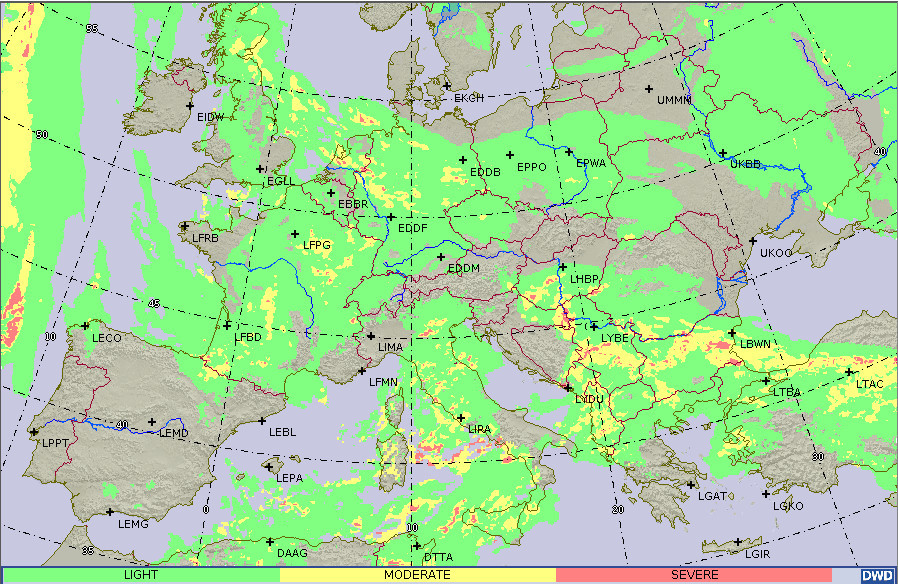Cirrus SR22 is certified for FIKI in EASA so it is not just an FAA thing :-)
Indeed, but the violation enforcement framework doesn’t exist in Europe.
We have had many threads here on the US framework, which itself has varied over the years. At one point in the distant past, Known Ice was any departure into IMC below 0C.
But there is no European framework.
Then you get curious cases like a TB20/21 with full TKS is certified for icing conditions in EASA-land but the same aircraft, N-reg, has no FIKI capability at all. That is because FIKI requires two alternators and some other stuff.
Peter wrote:
No such thing…
EASA certifies Beech for FIKI: http://blog.trade-a-plane.com/press-releases/cav-aerospace/easa-certified-tks-equipped-beechcraft-g36-fiki/
EASA certifies Diamond DA42 for FIKI: http://www.avweb.com/avwebflash/news/diamond_da42_ng_certified_FAA_EASA_fiki_202322-1.html
Fuji_Abound wrote:
Its a different approach than boots which in contrast you equally dont want to cycle to soon.
I have no personal experience with this, but I know that a test question in the IR theory asks about when to cycle the boots. The correct answer is anytime icing conditions are suspected before entering. The wrong answer is after sufficient ice has built up to prevent “bridging”. Reading into this, it seems the technology changed long ago (like 50 years ago) and while with the early systems you had to build some ice before being able to shed it, certification requirements now are such that the system must work with any amount of ice.
Since I wasn’t even born when the suggested change was made unfortunately this is all hearsay from my part.
Going back to the accident video, presumably the TBM has a stick shaker/pusher, which activates at a lower AoA if de icing services are on? Also Vy with de icing services is typically 10-20 knots faster. Also having de ice services on, but not the inertial separator, which doesn’t typically reduce torque significantly, seems non sensical, as mentioned in the video, but engine failure may not have been cited as a cause? Unless the pilot had the pusher interrupt depressed, which would disconnect the A/P, with de ice on, the pusher would have activated at speeds well above the simulated speed tape on the video. This accident raises more questions on envelope protection through the pusher system, than the icing itself, unless on the TBM you need the inertial separator on to have the pusher in ice mode.
The encounter was outside convective activity, and Pireps were for mixed/rime, not for super cooled large droplets clear. You will certainly be converted to the religion that de icing that doesn’t involve bleed air is a marketing ploy, if you need to navigate SCLD ice with TKS or 1940’s boot technology. I sometimes feel the FIKI for most piston GA is there as a training exercise for the IFR schools, it might cope with some light rime, but anything that commercial air transport calls moderate is well beyond its capability.
The entire light – moderate – severe terminology is mostly qualitative, and what is severe for one might be moderate for another… But here is how it works in practice.
You notice ice. You judge how it builds up and how the deicing copes. You decide what to do – keep going, tactical exit, emergency. You act accordingly. The forecasts are so unreliable and conservative, they tell you what might happen and help the judgement, but on their own are not useful except for the most conservative flying.
Now, feeezing rain – the classic case is rain out of a warm front. You get rain from warm cloud drop through a sub-zero layer beow. This is bad news not because you get super-cooled water droplets – almost all icing is created from these – but they ar huge compared to what you get in cloud, they cover wide areas, and the have a wide verical extent – not easy to go around, other than the only other weather that gives you super-cooled droplets – strong convective clouds. Large droplets also give you runback icing, which boots cannot cope with at all, regardless of how fast they can cycle.
The point I sort to make is that if you resort to TKS once ice has formed then a high flow rate will be required to remove the ice and given the size of typical resevoirs the fluid will quickly be used. I think the strategy is ideally to use TKS before entering icing conditions. Boots on the other hand work as soon as ice is detected, and while they can be cycled before entering icing conditions there is nothing to be gained. Waiting for a significant build up of ice with either would be foolhardy. Perhaps there isnt agreement but I had always understood TKS should be switched on as soon as you anticipate you might enter icing conditions notwithstanding the temptation to limit the use of fluid. Moreover as much as you might not want to waste fluid both manuals for the 22 and 42 suggest the sytem is run monthly and primed on the ground.
Mooney_Driver wrote:
Do you know and use Advice by the DWD? I think it is quite good indeed.
Does it cover Scandinavia?
Peter wrote:
What is the physics which would cause the skin temp to fall below the OAT, during a descent or at any other time?
The heat capacity of the aircraft? Particularly of the fuel in wing tanks?
Does it cover Scandinavia?

The heat capacity of the aircraft? Particularly of the fuel in wing tanks?
I cannot see this. In 100-150kt airflow, any temp difference gets equalised almost instantly.
What you do get is ice forming on wing tanks if you descend fast from a high altitude. I have had this. But it is very mild, and it forms only after landing.